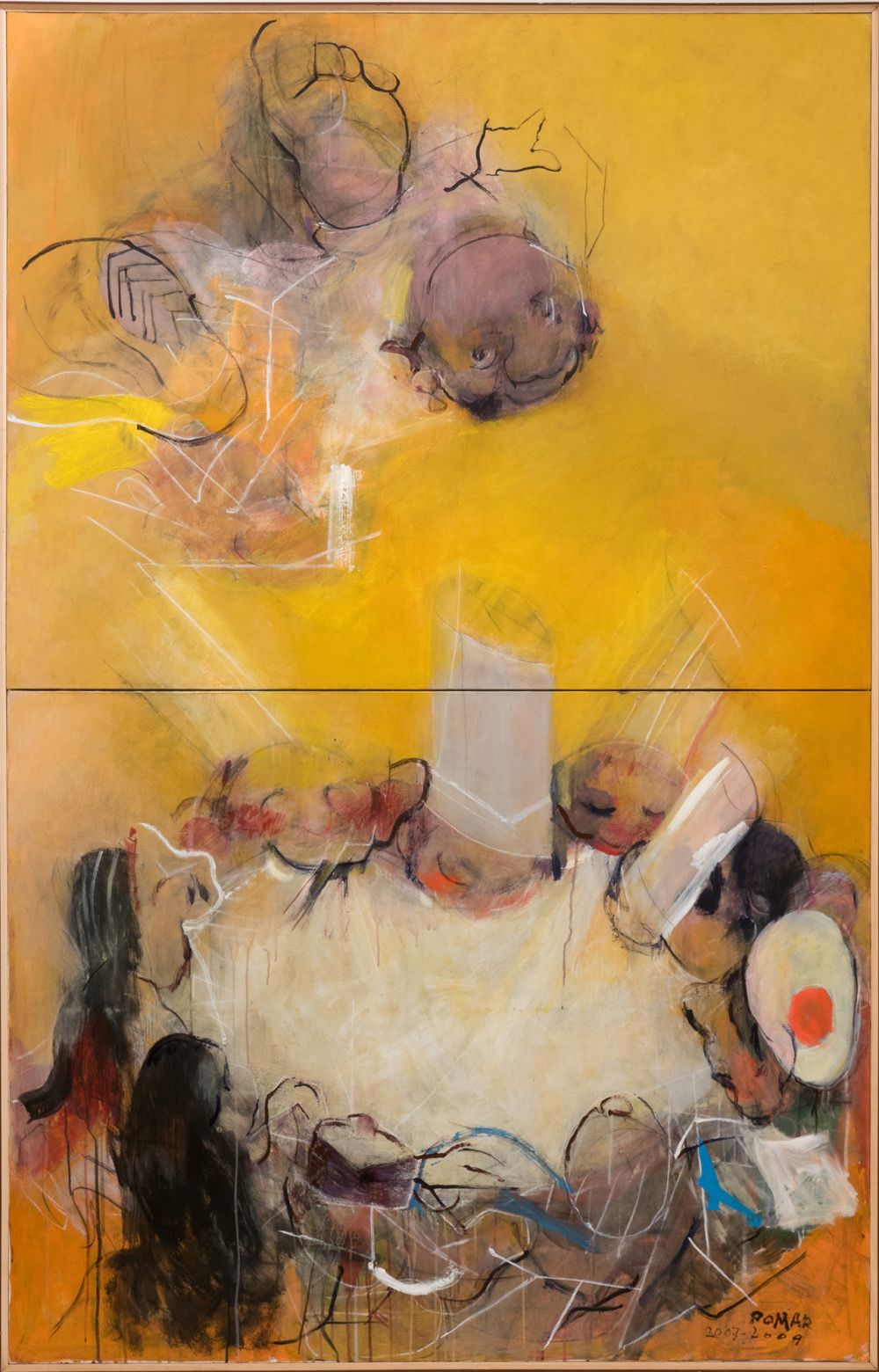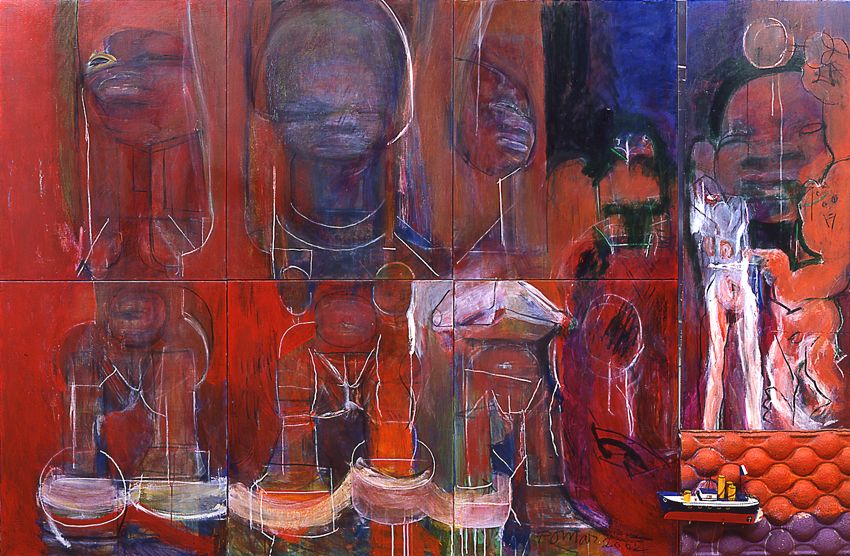Julio Pomar


Selected Works

Julio Pomar
Le radeau de la Méduse, 2009
Acrylic, charcoal and pastel on canvas
228 x 282 cm

Julio Pomar
Le pantin ou le bal des cuisiniers, 2009
Acrylique, charbon et pastel sur toile
228 x 146 cm

Julio Pomar
Le Jugement de Paris, 2002
Acrylic on canvas and wood, paper mache, mirror, and objects.
162 x 245 cm
(8 elements : (81 x 65 cm) x 6 + 163 x 50 cm)
Some of the works depicted are no longer available.
Biography
A committed artist, Pomar opposed the Portuguese dictatorial regime, which led to his exile in Paris in the 1960s. In Paris, his interactions with numerous artists and intellectuals nurtured the evolution of his style towards a more abstract, modern expression.
Júlio Pomar subsequently traveled to Spain and Italy, where he discovered the work of Goya and the Italian Renaissance masters, in particular Uccello and Piero Della Francesca, two artists who would leave their mark on his work.
In Paris, he exhibited at galleries such as Bellechasse, Gérald Piltzer and Patrice Trigano. Several retrospectives have been devoted to him around the world, notably in Lisbon (Gulbenkian Foundation, 1978), Brussels and Charleroi, as well as in Rio, Brasilia and São Paulo (1986 and 2008). In Portugal, his most recent anthological exhibitions were presented in 2004 at the Sintra Museu de Arte Moderna - Colecção Berardo and in 2008 at the Museu de Serralves in Porto.
Bibliography
Júlio Pomar, Jan Guichard-Meili et autres, Ed. Art moderne international, 1981. Pomar - Peintures, Michel Waldberg, Ed. L'Autre Musée-La Différence, 1992. Discours sur la cécité du peintre, Júlio Pomar, Ed. La Différence, 1985, ré-édition 1992. Et la peinture ? - Les essais, Júlio Pomar, Ed. La Différence, 2000. Anthologie des écrits de Júlio Pomar sur l'art, Les mots de la peintures, Ed. La Différence, 2002. Edição & Utopia ù Obra gráfica de Júlio Pomar, exposition à l'Atelier-Museu Júlio Pomar, Ed. Documenta, 2015.
